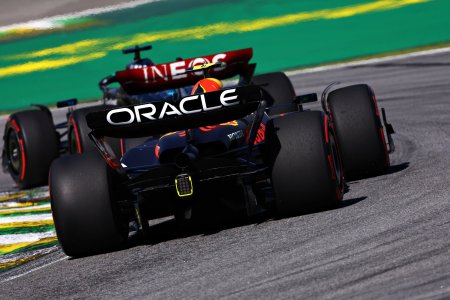American Le Mans Series 2010
On the heels of the American Le Mans Series announcing its new class structure for 2010, the Automobile Club de l’Ouest, rules makers for all Le Mans-branded series, confirmed its regulations for next year.
As expected, major changes come in the ACO’s efforts to equalize diesel and gasoline-powered prototypes. LMP1s, such as the diesel-powered Audi R15 TDI and Peugeot 908 HDi-FAP will have a 2.1 percent smaller restrictor also 5.8 percent decrease in supercharger pressure. They’ll also run 30kg heavier than this year, with a new minimum weight of 930kg.
Gasoline-powered P1 cars, on the other hand, will benefit from a five percent increase in restrictor size, and GT1-based power plants, such as the V12 Aston Martin, will enjoy a 2.4 percent increase in power. Minimum weight will remain at 900kg for both types of power plants.
These changes were made following the results of various studies carried out by the ACO, both with data gathered at events and also through manufacturers themselves, culminating with a manufacturer meeting in June following the 24 Hours of Le Mans.
Diesel cars from Peugeot and Audi again had the clear advantage at Le Mans this year, despite power cutbacks for 2009. The ACO hopes this latest batch of adjustments will bring the competition back in line.
“We’ll see the real effect out on the track, but in any case it’s the aim of this adjustment, which demanded a lot of hard work,” said Vincent Beaumesnil, ACO Sports Manager. “As you know, our races include several different categories in which the technologies are also different. With the arrival of new cars, we have to do things so that all these technologies can co-habit properly, and then make the little adjustments that guarantee technical equality.”
Following in the footsteps of the revisions made to GT2 cars in May, the ACO also issued minor adjustments to prototype bodywork, mainly targeting the fender sections. Bodywork must now cover the wheels from the rear view, with the use of grills or fairings no longer permitted.
The ACO will confirm possible changes to the front sections of bodywork within the next two weeks. This area of the regulations has been up for debate for months, with Peugeot lodging a protest against the legality of Audi’s R15 TDI at Le Mans in June and not having an official clarification since.
In GT2, the regulations will remain unchanged, in efforts to maintain stability and costs for teams. There had been rumors of possible changes, some drastic enough to require major design overhauls, but it appears to be no longer the case.
“In an unfavorable economic context, the idea was to modify the cars as little as possible, said Beaumesnil. “All entrants want to be able to use their current cars in 2010, and possibly in 2011 and beyond. It was necessary to make a few clarifications and to modify certain points in the regulations to prevent some entrants from investing in solutions that we consider too extreme, and which go against the aims we have set ourselves – to keep the cars’ lap speeds above 3 minutes and 30 seconds at Le Mans.”
As confirmed at Le Mans, the GT1 category will likely to go away for 2010, unless the ACO receives enough interest from multiple manufacturers before its end-of-September deadline. If that's indeed the case, the 24 Hours of Le Mans and Le Mans Series will be left with a three-class format.
Last weekend, the ALMS confirmed its new class structure, remaining with four categories, but combining both LMP1 and LMP2, while adding the cost-effective LMP Challenge and GT Challenge classes.
Read more about those changes here.
All text from:
Speedtv.com
 .
.










